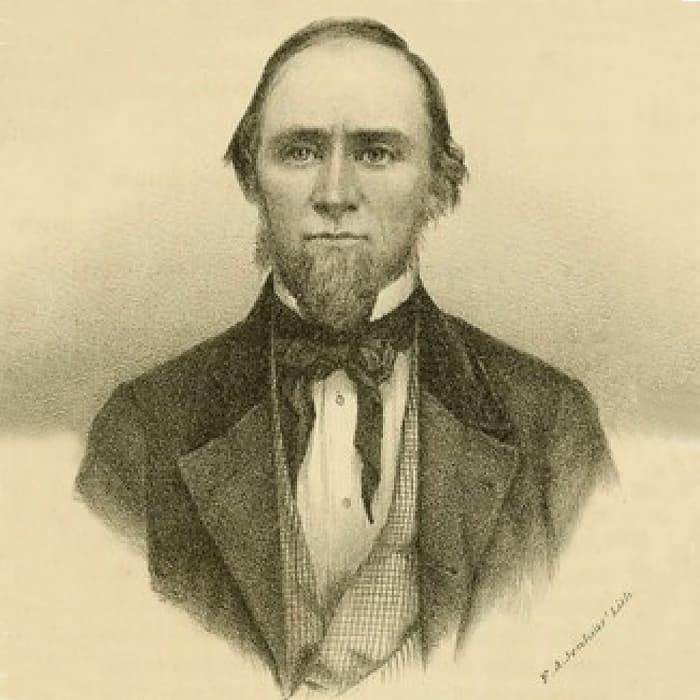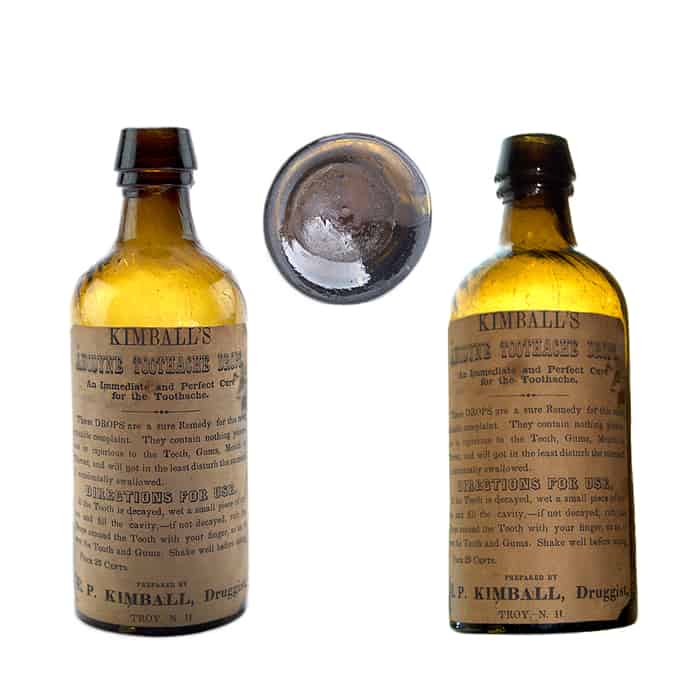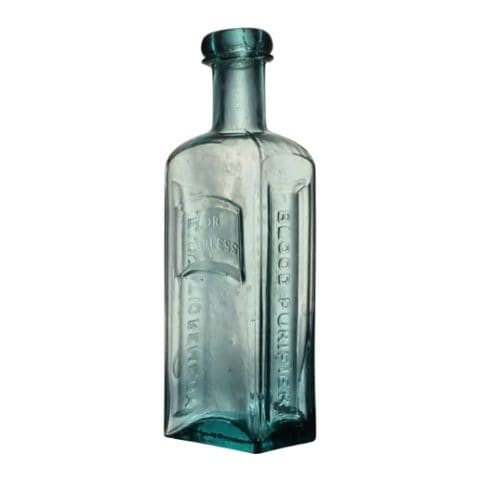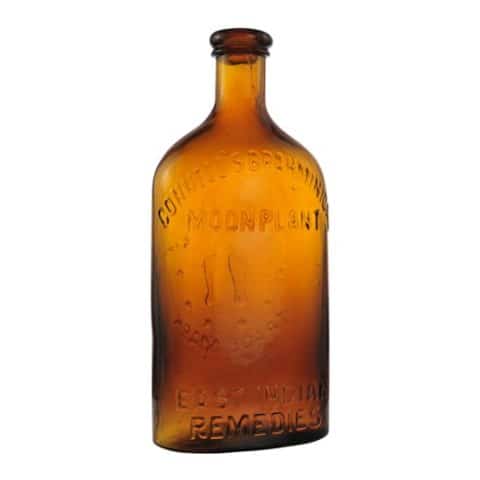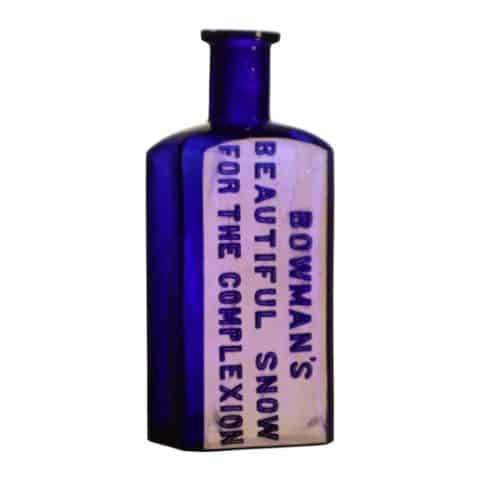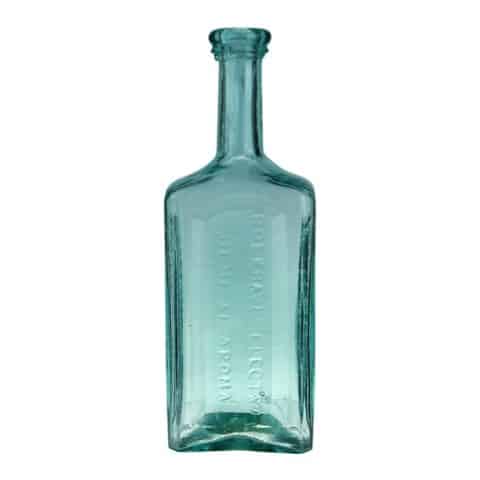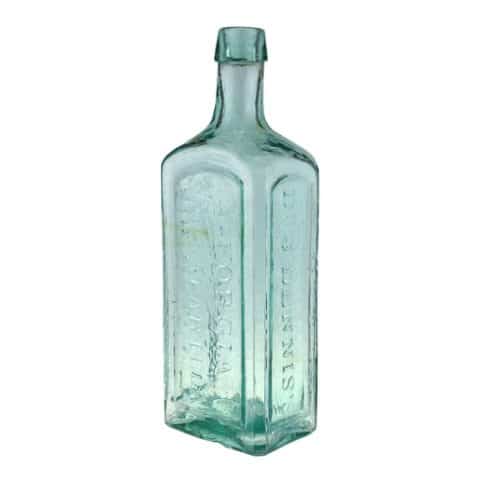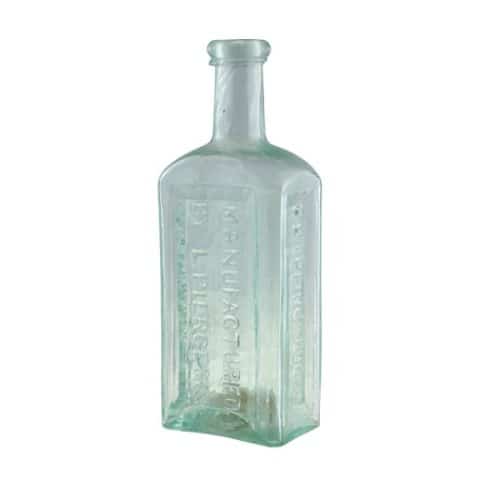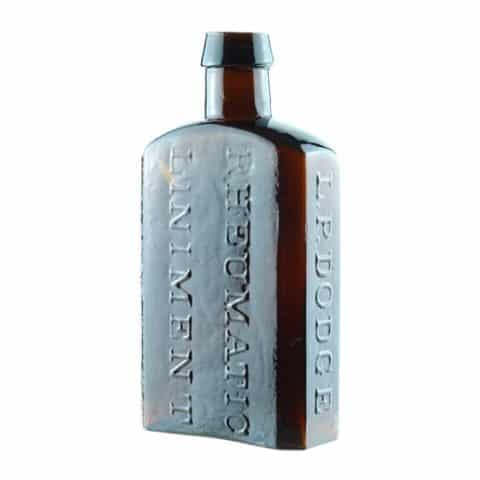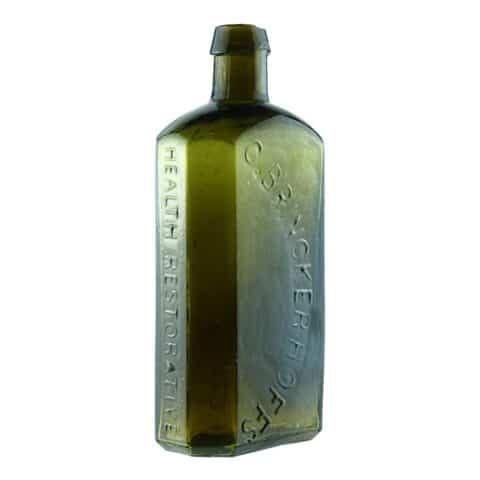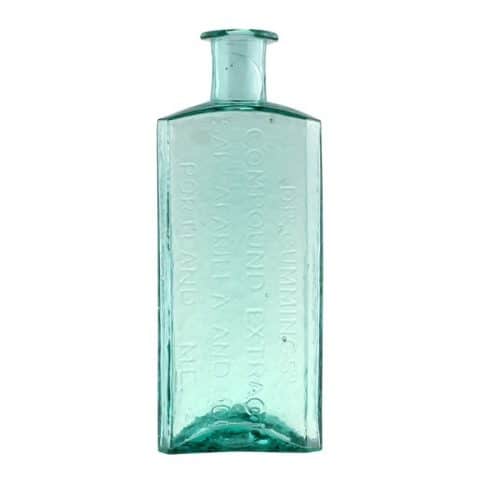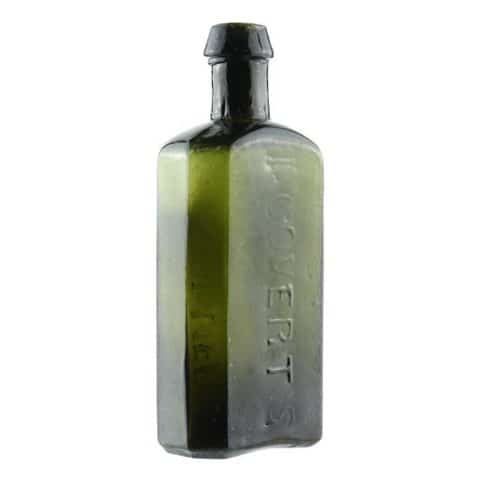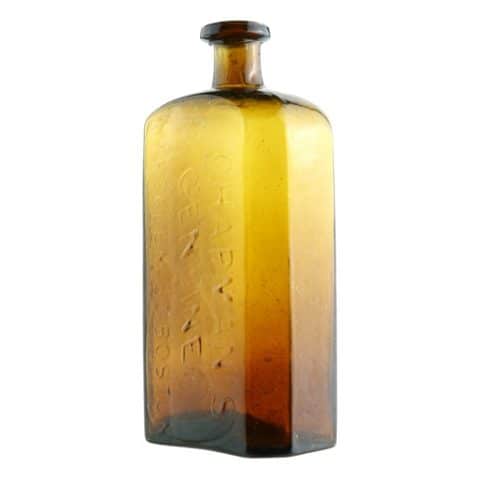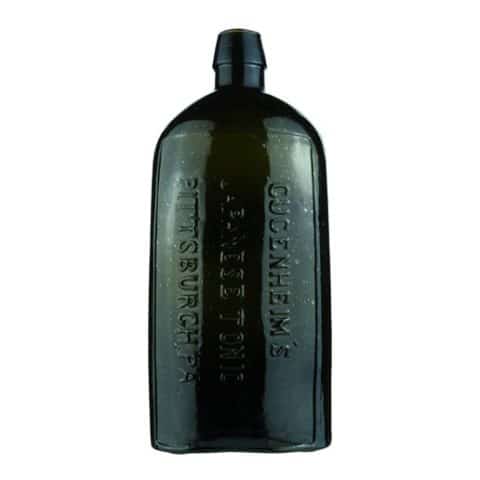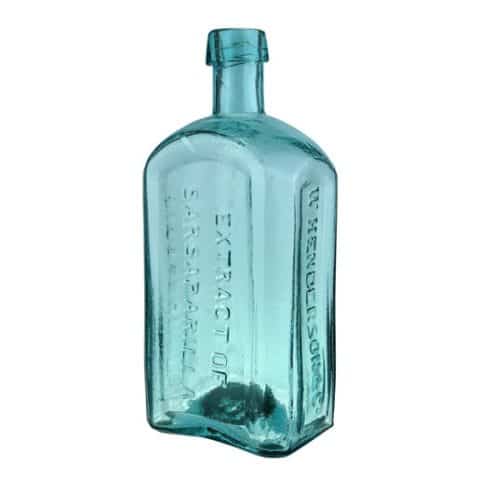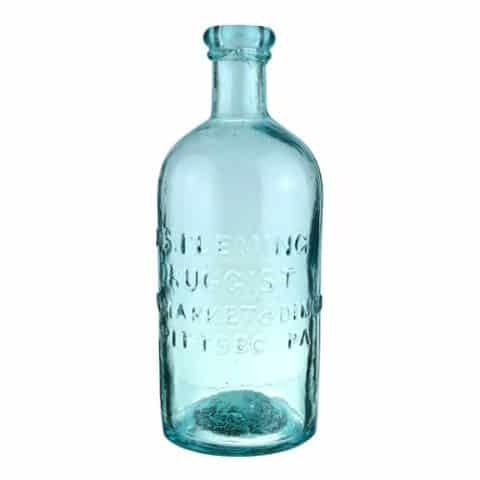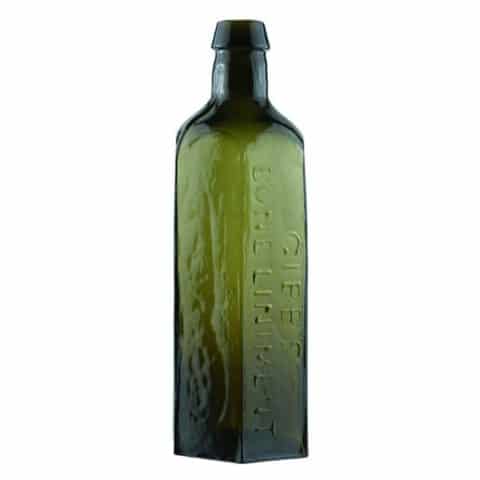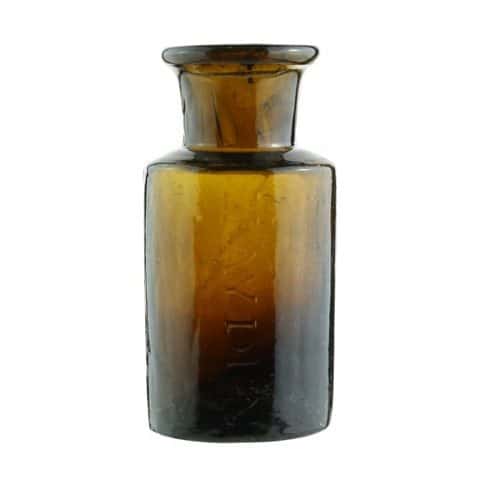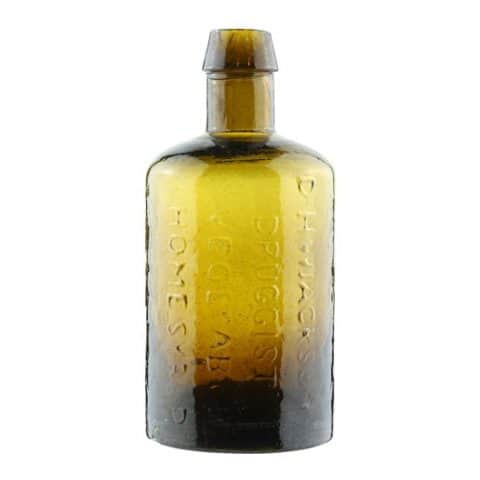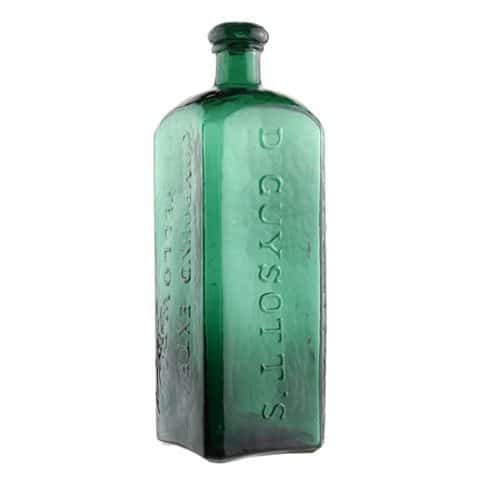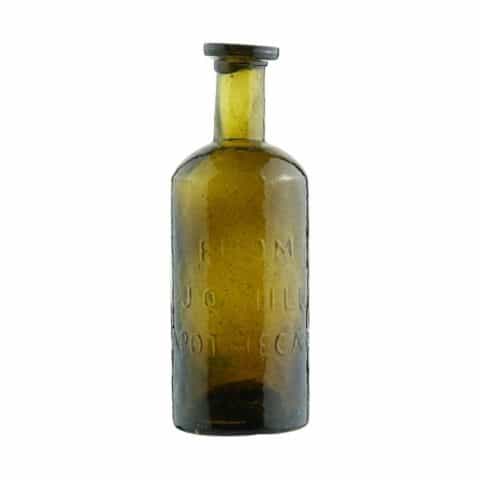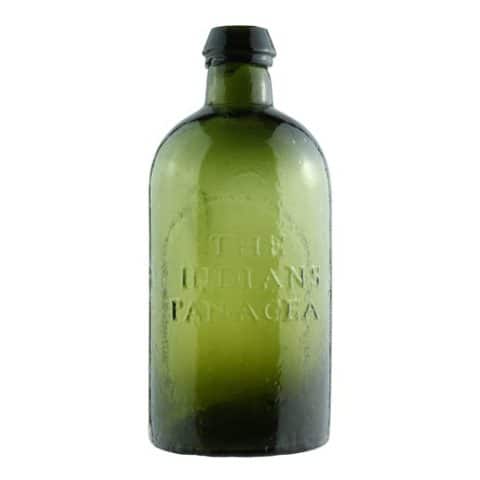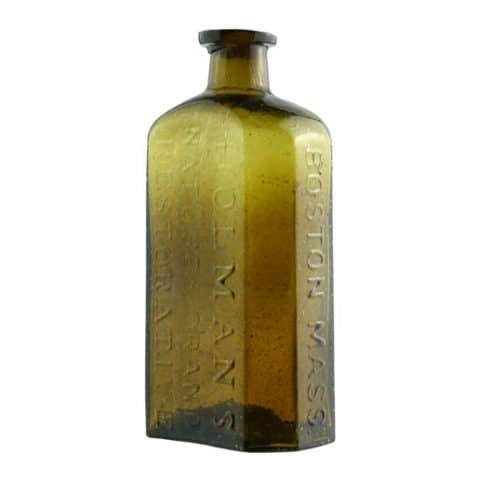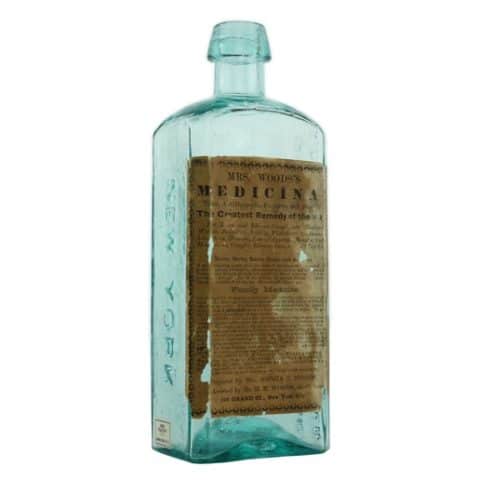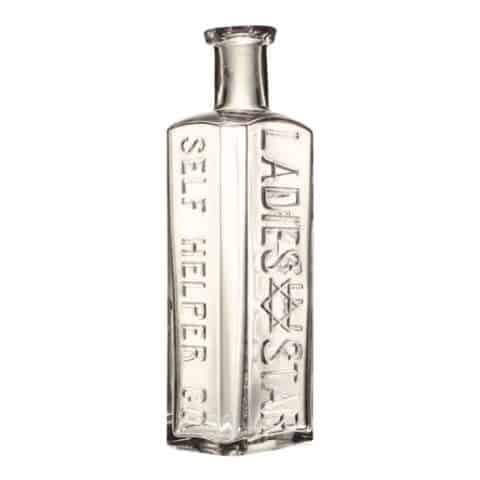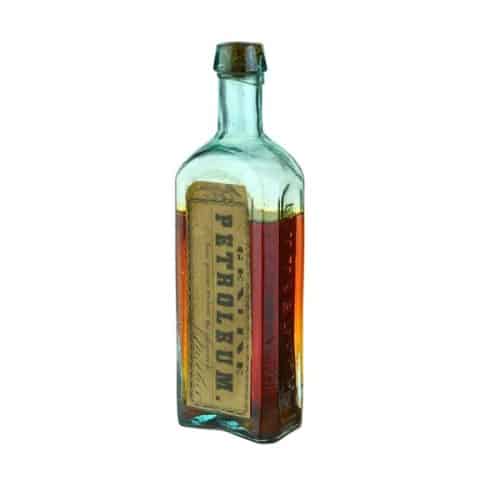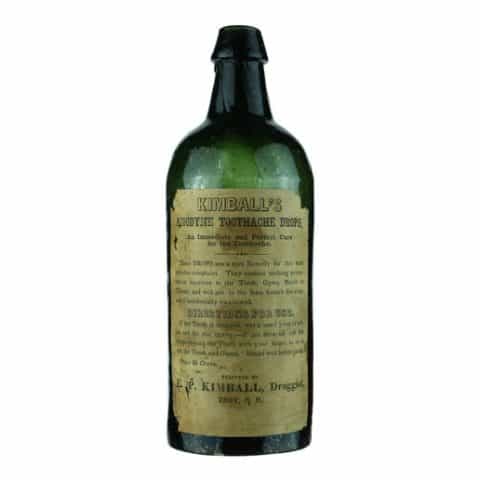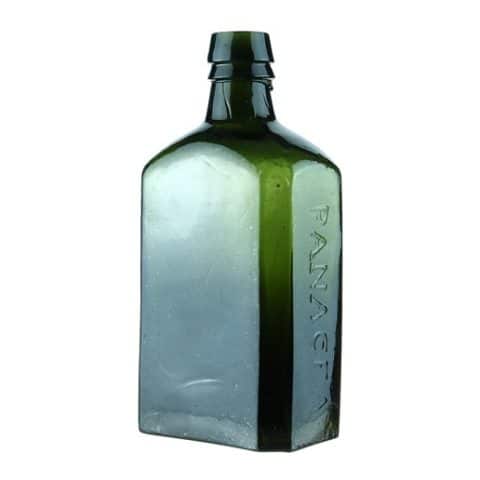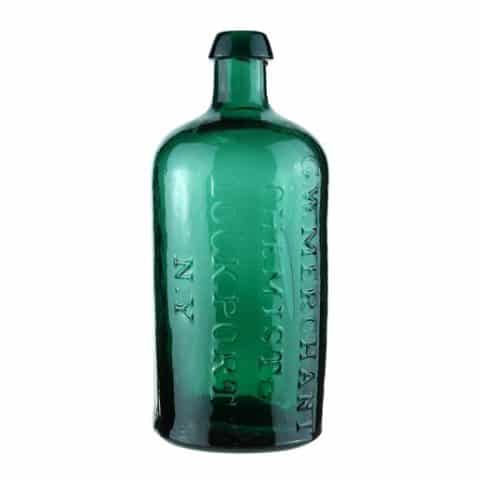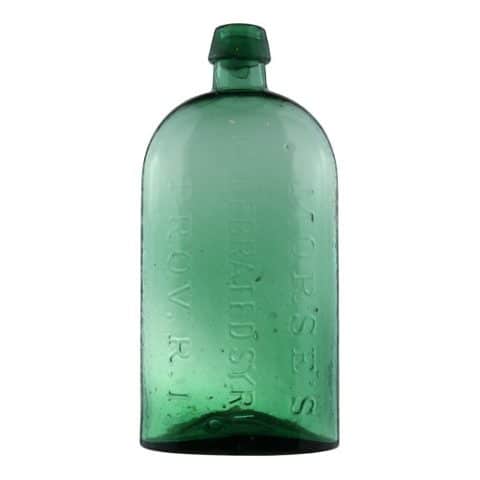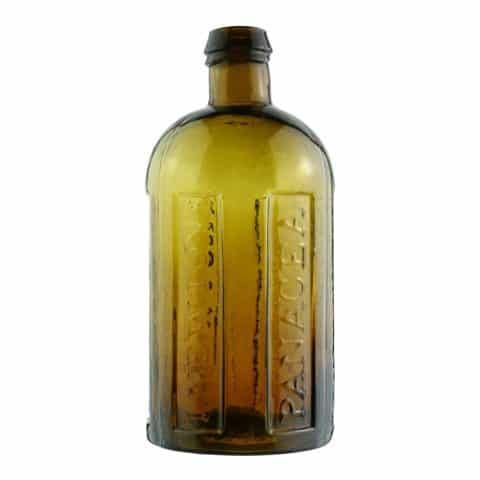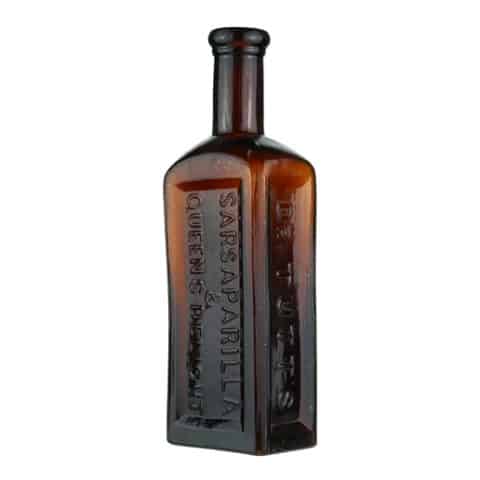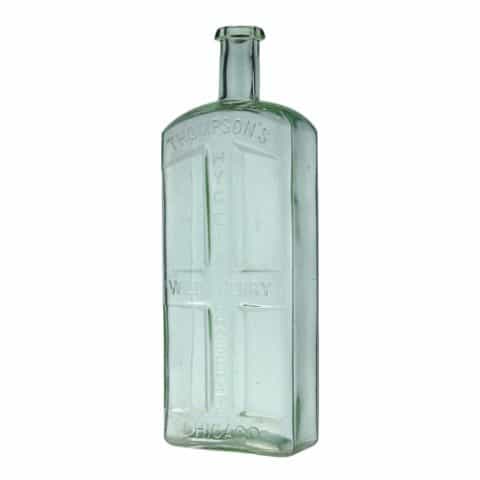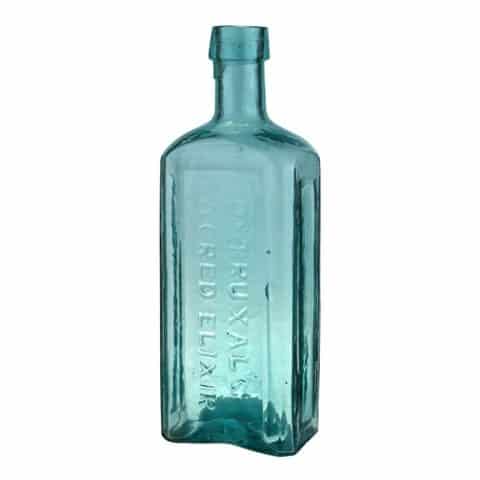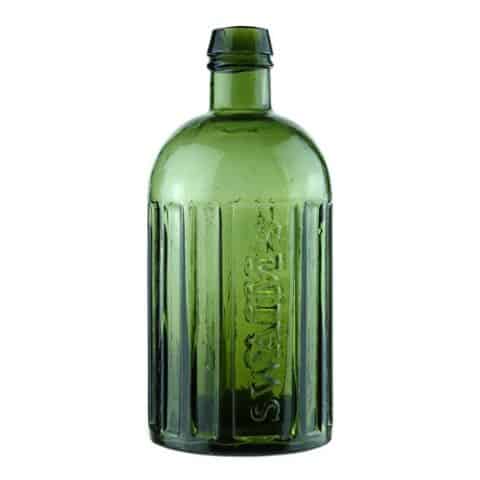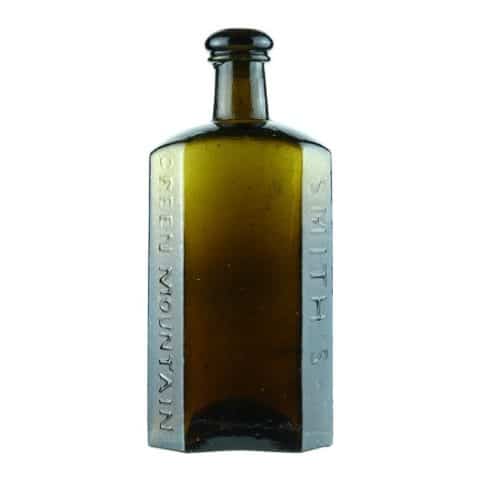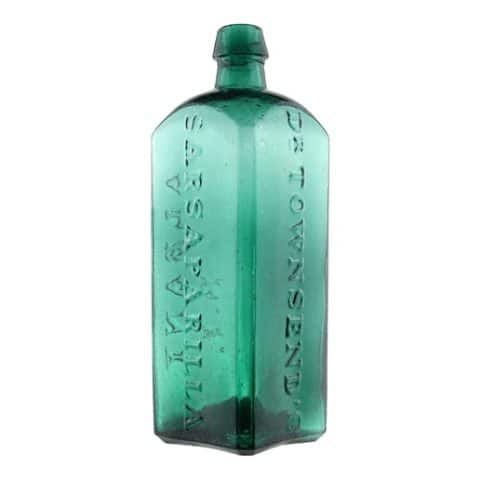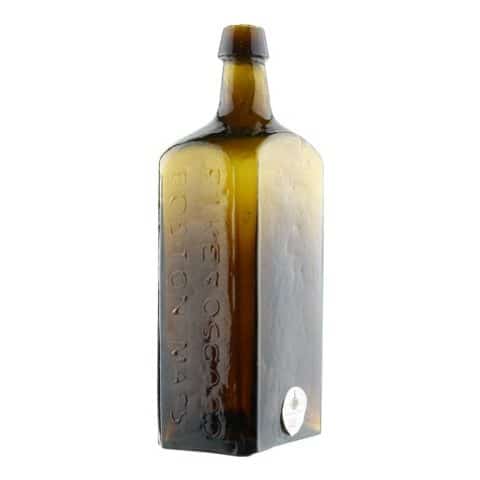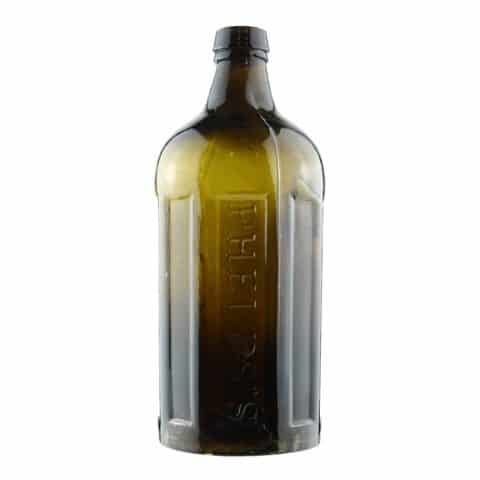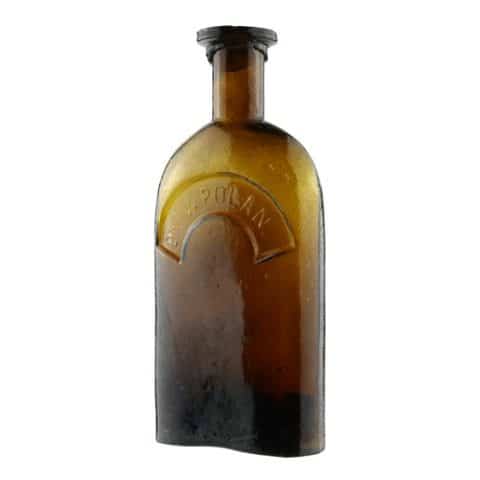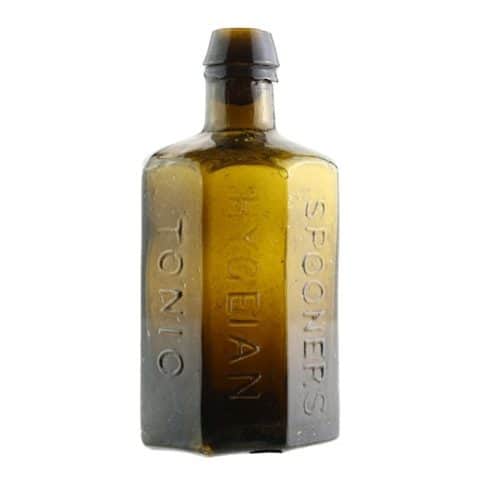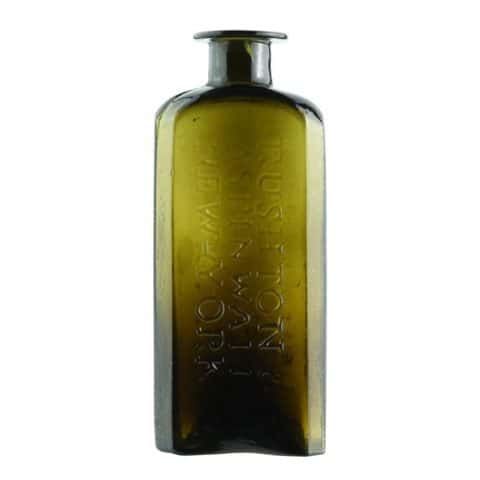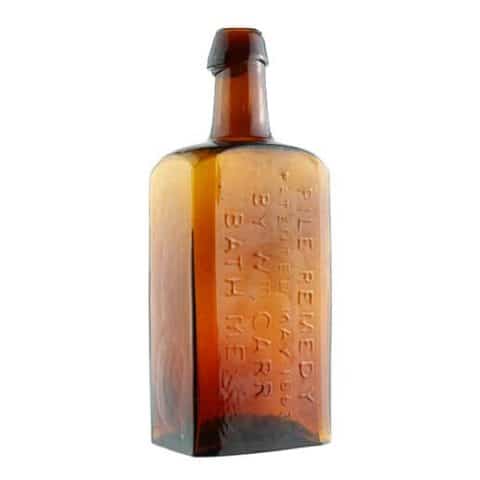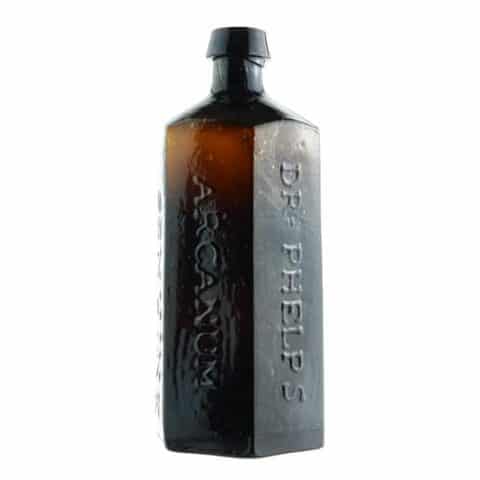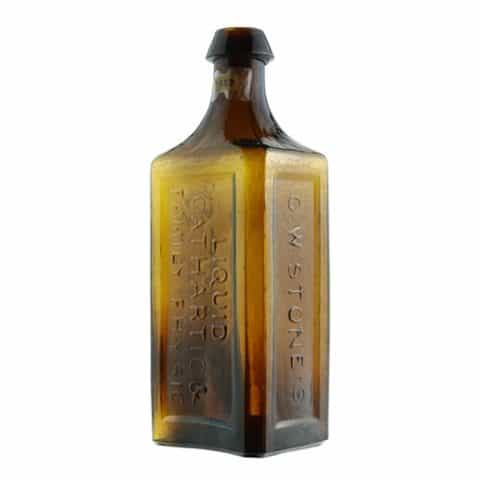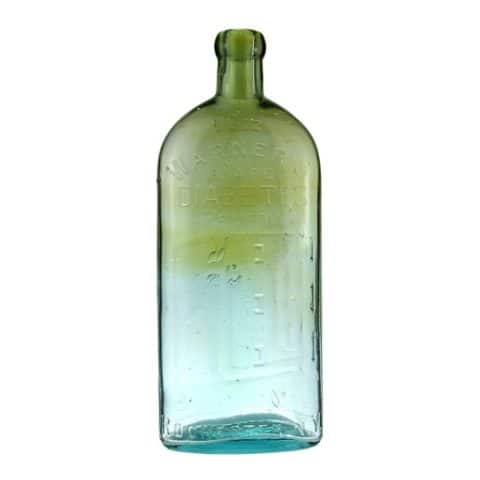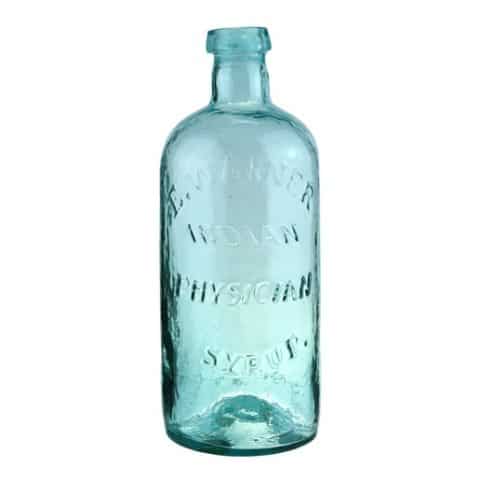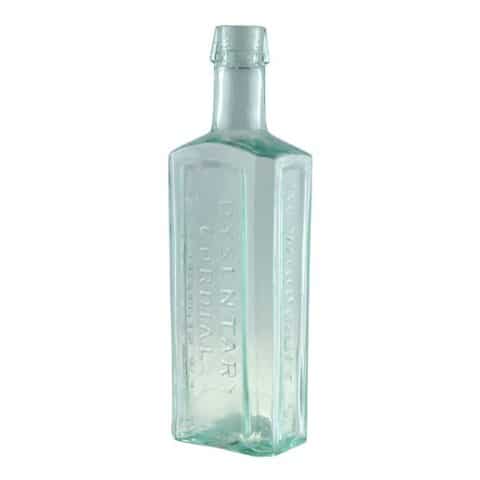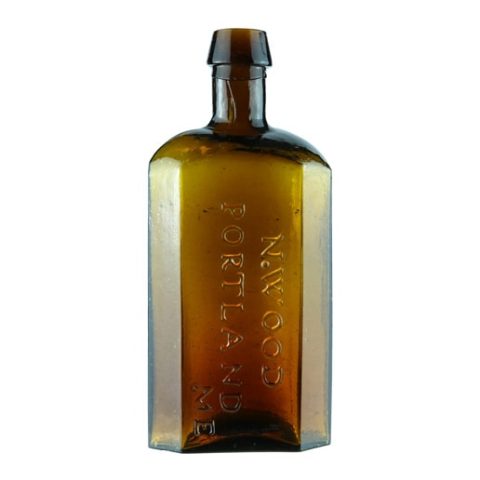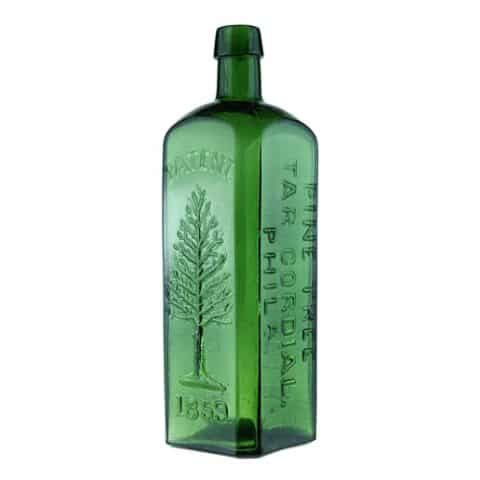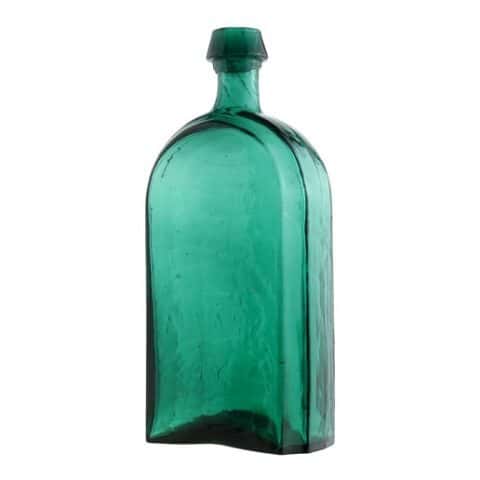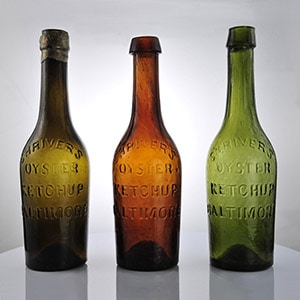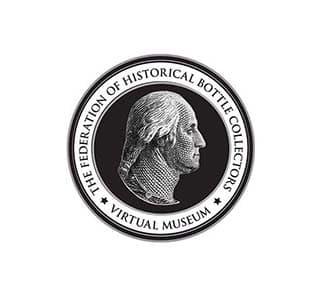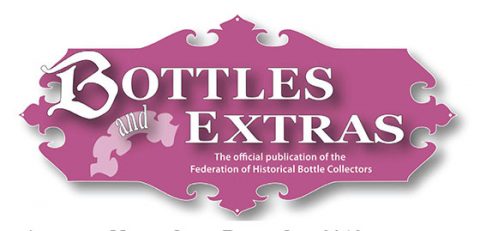Kimball’s Anodyne Toothache Drops
Kimball’s Anodyne Toothache Drops
Edward P. Kimball, Troy, New Hampshire
Forest Green Cylindrical Medicine
Provenance: Chris Bubash Collection
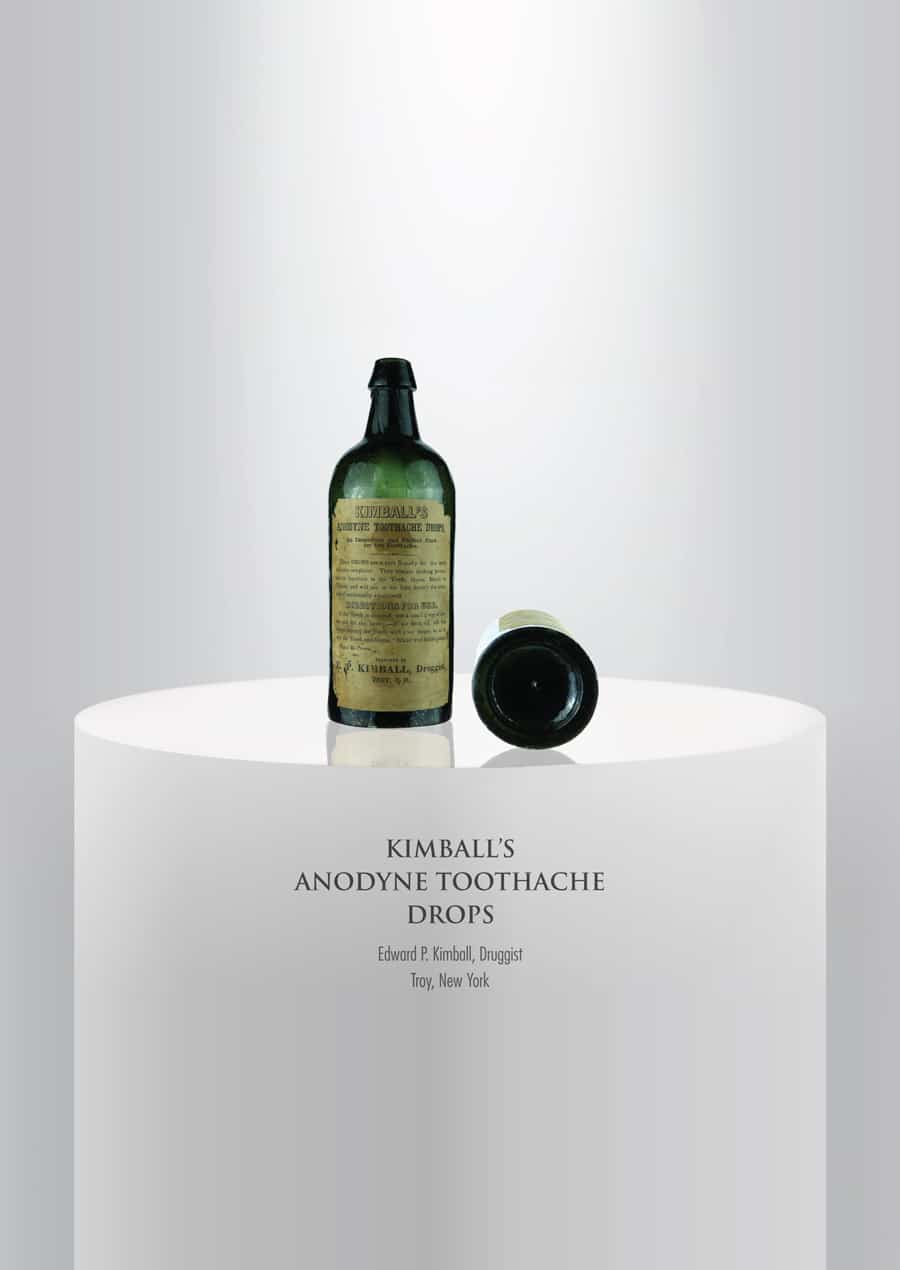
Our label-only Kimball’s Anodyne Toothache Drops were put out by Edward P. Kimball, who was a druggist in Troy, New Hampshire. Many antique bottle collectors are familiar with the name Kimball as the name is also associated with the embossed rectangular, tombstone-shaped Kimball’s Jaundice Bitters.
See museum example of Kimball’s Jaundice Bitters.
Our 9 1/4 inch tall by 3 1/8 inch wide cylindrical bottle was blown in a dark forest-green glass. The sole label was applied to the face of the bottle. The tall neck is tapered, connecting to an applied tapered collar. There is a depressed smooth base with an embossed dot near the center.
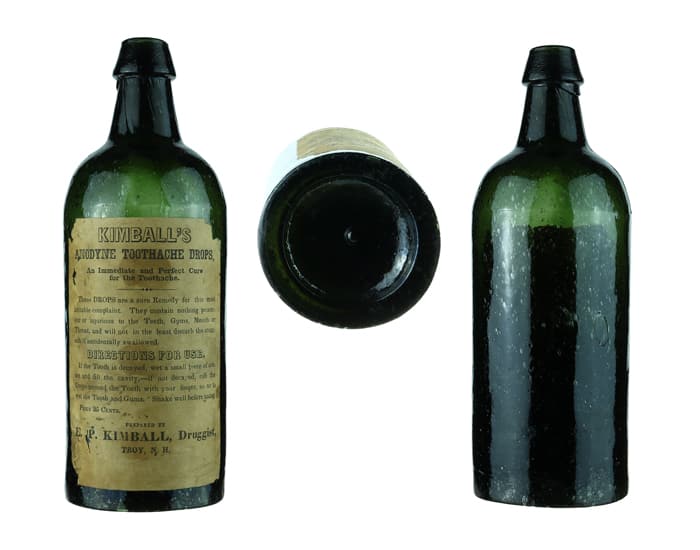
The label reads, “Kimball’s Anodyne Toothache Drops. An Immediate and Perfect Cure for the Toothache. These drops are a sure Remedy for this most irritable complaint. They contain nothing poisonour (sic) or injurious to the Teeth, Gums, Mouth or Throat, and will not in the least disturb the stomach if accidentally swallowed.”
“Directions for Use. If the tooth is decayed, wet a small piece of cotton and fill the cavity, —if not decayed, rub the Drops around the Tooth with your finger, so as to wet the Tooth and Gums. Shake well before using. Price 25 Cents. Prepared By E. P. Kimball, Druggist, Troy, N. H.”
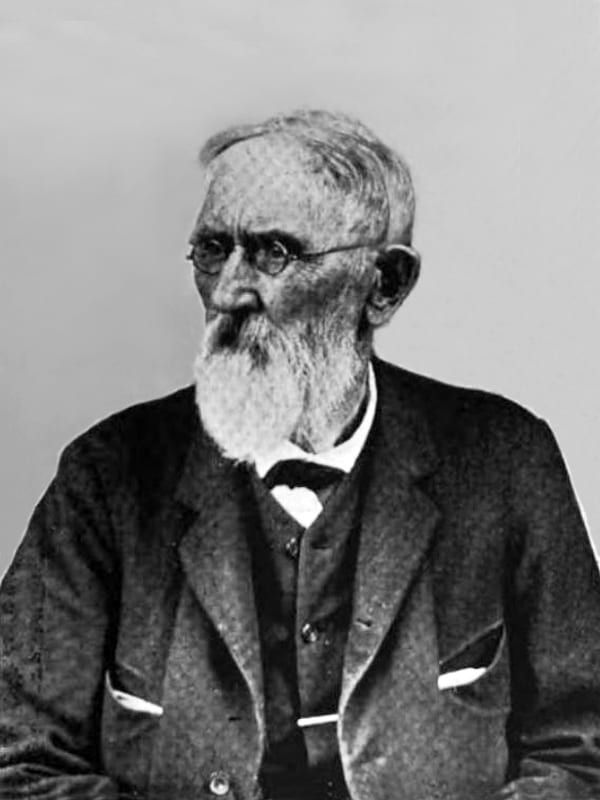
Edward P. Kimball
Edward P. Kimball was born in Hillsborough, New Hampshire, on February 23, 1819, the son of Col. Retyre Kimball and Mary Bell of Tewksbury, Mass. His father was a tanner, currier, and shoemaker in Hillsborough and was a colonel of the Twenty-sixth New Hampshire Infantry. In most accounts, it is said that Edward Kimball had a meager education though he did attend local schools in his youth.
At the age of eleven, Edward was left dependent upon himself to earn his living after his father passed away on December 10, 1830. After his death, he lived for two years with his uncle, who kept a store. Kimball then went to Francestown and worked on a farm.
Kimball next worked as an apprentice and then a clerk in the hat-making trade with Benjamin F. Grosvenor at Hillsborough Bridge. Grosvenor moved the hat business to Troy in 1836, where he opened a new store. At the end of four years, Kimball bought out Grosvenor and added groceries and other merchandise to the business, in effect creating his “General Store.”
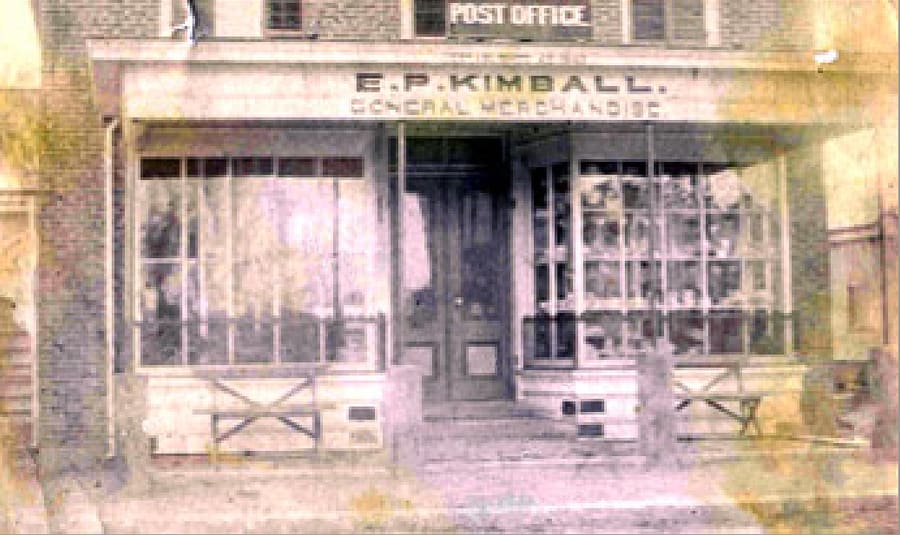
Edward Kimball wed Mary Ann Fairbanks on July 4, 1844. They would have three children, Charles, George, and Warren. That same year he opened a livery stable while carrying on with numerous other enterprises. In 1848, Kimball built his house and general store in Troy, which he operated with his son. For many years, E. P. Kimball & Son would run their store on the Common dealing in general merchandise.
During the next half-century, Kimball became one of the most respected and prominent residents of Troy and played a major role in the development of the village by investing in residential construction and various industries.
In addition to hat-making and being a commercial merchant, Kimball was involved in many businesses over the years. These included a tin business known locally as the “tinshop,” where he at one time had ten peddlers on the road. At one time or another, he also ran a brickyard, broom business, and picture frame business. He also held various offices and positions and served as the postmaster, town clerk, tax collector, auctioneer, and deputy sheriff, to which he was appointed in 1844. He eventually was appointed Sheriff in 1874.
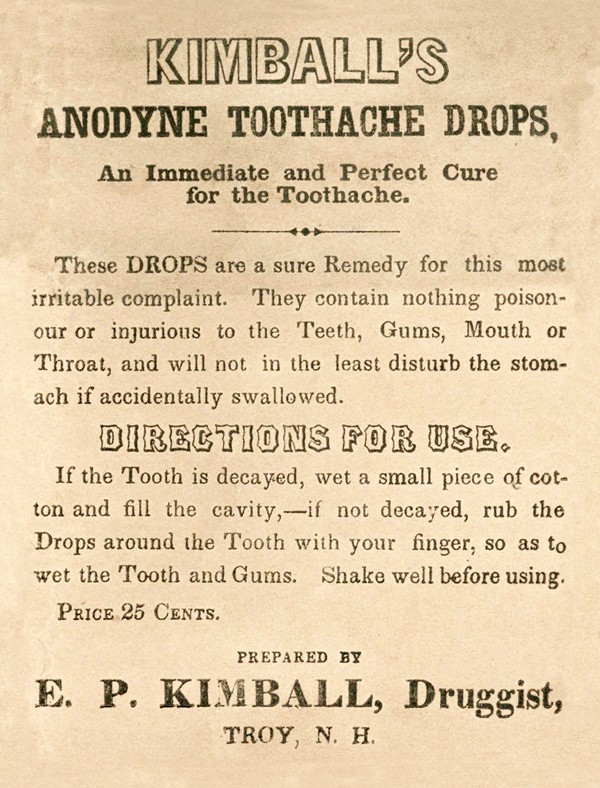
Perhaps his most unusual business was the manufacture and sale of various medicines. Kimball had little formal education, but the mid-nineteenth century was when the success of a medicine business had more to do with a person’s ability as a salesperson than with his medical training. He made at least three medical products that he sold from his store in Troy. They were the aforementioned Kimball’s Jaundice Bitters, Anodyne Toothache Drops, and Hair Renovator. The hair renovator was “guaranteed to restore and beautify the hair.” The toothache drops were labeled as “an immediate and perfect cure.” The bitters were “the best article in the world for the jaundice and all kindred complaints, and for worms in children.”
Kimball’s medicine business was apparently as successful as his other business undertakings. He purchased medicine bottles from the glass factories at Keene and Stoddard and had traveling salesmen on the road selling his medicines. Edward P. Kimball would die on January 23, 1890, in Troy.
Primary Image: Kimball’s Anodyne Toothache Drops bottle imaged on location by Alan DeMaison, FOHBC Virtual Museum Midwest Studio
Support: Secondary image of cylindrical Stoddard glass Kimball’s Anodyne Toothache Drops bottle courtesy Jim Hagenbuch, Glass Works Auctions.
Support: Reference to Historical Sketch of the Town of Troy, New Hampshire And Her Inhabitants from the First Settlement of the Territory Now Within the Limits of the Town in 1764-1897 by Melvin Ticknor Stone, 1897
Support: Reference to The Granite Monthly, A New Hampshire Magazine · Volume 28, 1900
Support: Reference to Monadnock Moments No. 84: Kimball’s Medicines – Historical Society of Cheshire County
Join the FOHBC: The Virtual Museum is a project of the Federation of Historical Bottle Collectors (FOHBC). To become a member.

